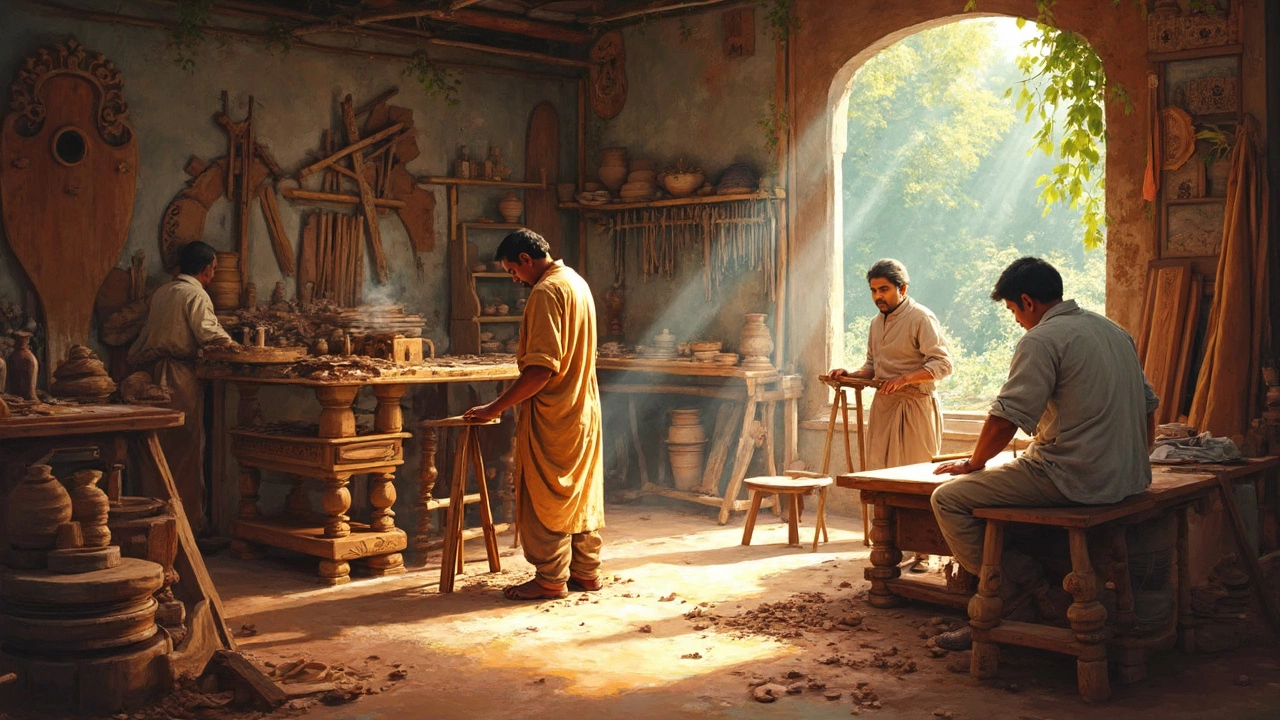- Booming Small-Scale Manufacturing Businesses in 2024 Feb 17, 2025
- India's No 1 Pharma Company Revealed Feb 26, 2025
- Is AbbVie owned by Abbott? - Unraveling the corporate link between two pharma giants Oct 20, 2025
- Profitable Manufacturing Business Ideas to Boost Your Earnings Jan 23, 2025
- Who is the King of Textiles? Apr 16, 2025
Strongest Indian Wood: What It Is and Why It Matters
If you’re hunting for wood that can handle heavy loads, harsh weather, or long‑term wear, India offers several species that stand out. These timbers combine natural density, resistance to pests, and straight grain, making them favorites for bridges, houses, and high‑end furniture. Below you’ll find the most robust Indian woods and simple tips on using them.
Top Indian Woods Known for Toughness
Sal (Shorea robusta) – Often called the king of Indian timber, Sal is dense, hard, and naturally resistant to termites. Its deep reddish‑brown hue gives a premium look, and it’s widely used for structural beams, railway sleepers, and heavy‑duty furniture.
Teak (Tectona grandis) – Teak’s oily fibers make it waterproof and decay‑proof, perfect for outdoor decks, boat hulls, and garden furniture. Though not the absolute hardest, its blend of strength and stability earns it a spot on any durability list.
Sheesham (Indian Rosewood, Dalbergia sissoo) – With a Janka hardness around 1,500 lbf, Sheesham resists scratches and dents. Its attractive grain patterns are a bonus for cabinets, doors, and flooring where both looks and longevity matter.
Sapele (Entandrophragma cylindricum) – Similar to mahogany but tougher, Sapele offers high impact resistance and a fine, even texture. It’s a solid choice for heavy‑use furniture, musical instruments, and interior paneling.
Indian Oak (Quercus serrata) – Oak’s tight grain gives excellent load‑bearing capacity. Indian Oak is popular for staircases, doors, and traditional carpentry that needs to stand the test of time.
Choosing the Right Wood for Your Project
Start by matching the wood’s natural properties to the job. For structural work, go with Sal or Indian Oak because they handle compression well. For outdoor exposure, Teak’s oil content beats most alternatives. If you need a combination of strength and aesthetic appeal, Sheesham or Sapele fit the bill.
Check the moisture content before installation. Wood that’s too wet will shrink, warp, or crack later. Aim for a 10‑12% range for indoor projects and 8‑10% for exterior use. Use a moisture meter – it’s cheap and saves headaches.
Treat the timber with a suitable finish. Even the toughest wood benefits from a protective coating. For indoor pieces, a clear polyurethane seal keeps scratches at bay. Outdoor items need a marine‑grade varnish or oil to maintain water resistance.
Don’t forget fastening methods. Heavy timber often requires steel bolts or lag screws rather than nails. Pre‑drill holes to avoid splitting, especially with dense woods like Sal.
Finally, source your wood responsibly. Look for certifications like FSC or MSC, which ensure sustainable harvest. Ethical sourcing protects forests and often guarantees better quality control.
By picking the right Indian wood and following basic preparation steps, you’ll get a product that lasts decades without costly repairs. Whether you’re building a porch, a garden bench, or a custom cabinet, the strongest Indian timbers deliver strength, beauty, and peace of mind.
Discovering India's Strongest Wood for Durable Furniture
- Aarav Sekhar
- Mar 23, 2025
Dive into the world of Indian wood and uncover the strongest varieties used in furniture manufacturing. From teak to sal, discover how these woods stand up to the test of time and usage, offering reliability and beauty. Learn about their unique characteristics and why they are favored by craftsmen. Get tips on selecting the right wood for your needs.
